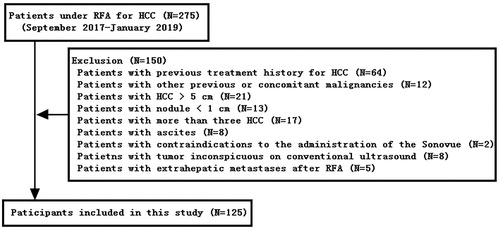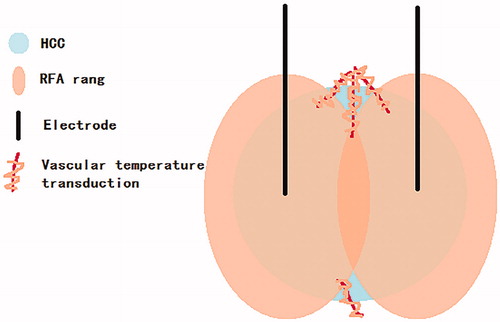Figures & data
Table 1. Characteristics of patients and HCC lesions.
Table 2. Potential risk factors affecting HCC recurrence after RFA.
Figure 2. ROC for PI measured by CEUS. The areas under the curve were 0.72 with a 95%CI for the area between 0.63 and 0.81.

Figure 3. Recurrence-free survival (RFS) of HCC patients according to different levels of PI. Patients with a PI 58.8% or lower had significantly poorer RFS than those with higher. (p < 0.0001).

Table 3. Relationship between TTP and HCC recurrence after RFA in subgroup of tumor size.



